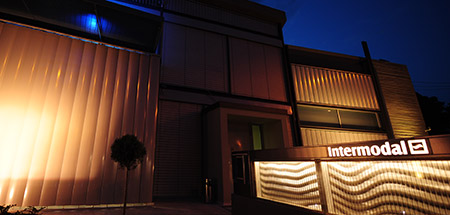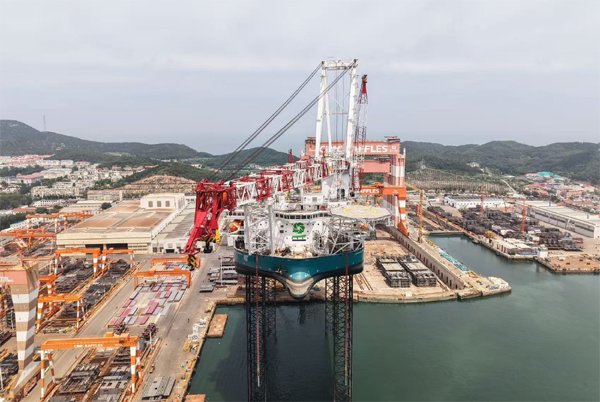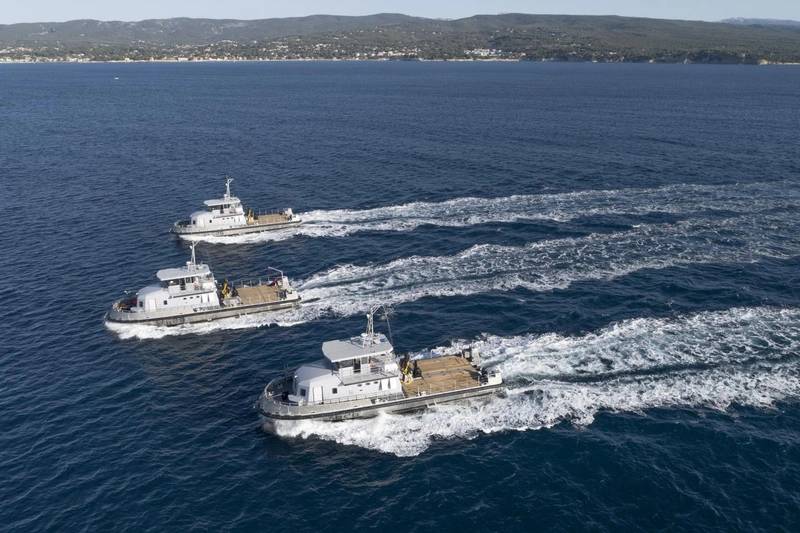
Interest in hybrid government and patrol boats is growing as boat builders demonstrate their many benefits.
Launched last year at Seawork, Sweden-based Marell Boats says its M17 Patrol was the star of the show with its hybrid powertrain from Scania and propulsion system by Marine Jet Power.
Like others in the patrol boat market, Project Manager Mario Celegin is seeing increasing interest in hybrid patrol boats. There’s a lot of reasons why: near-silent patrolling in electric mode, emissions-free operation in and out of harbor, lower fuel consumption at cruising speed, the ability to boost with electric power during acceleration and increased top speed during intercept operations. “Our M17 Hybrid boat increases the top speed from 45 to 50+ knots when the electric boost is engaged.”
The duration of the battery capacity is some 6-8 hours at speeds of 6-7 knots, says Celegin. There’s no need for support generators. With the installed battery capacity, the boat can be silent at stand-still and have most consumers running (including cooker, HVAC, lighting, navigation and coms) for some 30-40 hours without recharge.
It’s not just Europe taking notice. In May, the King County Sheriff’s Office Marine Division in the U.S. selected Moose Boats to build a new, custom diesel electric hybrid patrol boat. The vessel will be powered by two Volvo Penta D11-625HP diesel engines integrated with in-line twin Dan Foss electric motors. King County Sheriff’s Office was able to purchase this vessel by utilizing Government Service Agency discounted pricing with a grant made possible by Washington State’s Climate Commitment Act funding.
 Alternatives Energies built eight hybrid patrol vessels it built for the French Navy back in 2020.
Alternatives Energies built eight hybrid patrol vessels it built for the French Navy back in 2020.
Image courtesy Alternatives Energies
The project will involve close collaboration with Hamilton Jet, Volvo Penta and Corvus Energy which will provide the energy storage system that will enable the vessel to run solely under electric propulsion for up to two hours at 5 knots. Integrated diesel drive engines will act to replenish batteries, and electric motor boost will enhance upper end speed performance.
All American Marine has secured a contract to build a 63-foot hybrid catamaran for the Orange County Sanitation District. The Teknicraft- designed vessel will support ocean sampling and scientific research and will feature a hybrid propulsion system powered by Cummins QSB 6.7 engines paired with ABB’s Series Hybrid technology. This enables it to meet California’s zero-emissions standards, providing 30% of its operational power through a 588kW BorgWarner energy storage system.
British manufacturer Ribcraft has released its new Ribcraft Hybrid Patrol RHIB, one of the first of its kind in the world to feature new technology which switches seamlessly between an electric motor and a diesel engine. The -high-performance RIB is powered by twin Volvo Penta D4-270A diesel engines, paired up with twin Transfluid hybrid module HM560.
The hybrid system architecture incorporates a clutch and transmission that enables the vessel to operate in electric-only mode for silent, emission free running, in engine-only mode that provides propulsion and battery charging or in a combination booster mode with the battery-driven electric motor and diesel engine both driving the shaft for maximum thrust for maneuvering.
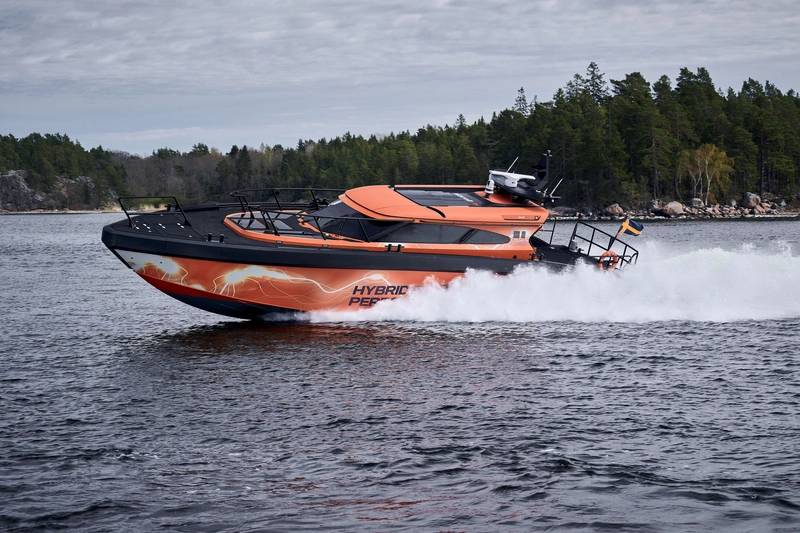 Marell Boats’ M17 Patrol features a hybrid powertrain from Scania and propulsion system by Marine Jet Power.
Marell Boats’ M17 Patrol features a hybrid powertrain from Scania and propulsion system by Marine Jet Power.
Image courtesy Marell Boats“Interest across the Indo-Pacific is growing, particularly from agencies focused on green fleet transition, near-shore law enforcement, and operations in environmentally protected zones,” says Adelina Florescu, Managing Director Ribcraft Australia & APAC. “We’ve now in a position to quote and spec from our Melbourne office, and we set up a manufacturing partnership with Edencraft in Geelong, hence we are capable of delivering sovereign-built hybrid platforms at scale.”
Electric equipment company Molabo of Germany highlights the safety of the power system in a recently-delivered fire-fighting and rescue boat built by the Finnish shipyard Kewatec. The vessel features a hybrid waterjet propulsion system utilizing two 50kW Molabo electric motors and a Molabo 48-volt drive that it says offers significant safety advantages compared to conventional high-voltage systems. The safe-to-touch electric drive system does not require specialized high-voltage trained personnel to install, repair or maintain the system, and it reduces risk to crew members, emergency personnel and the public while maintaining fast and efficient operational performance. The DOEN Waterjets jetdrives further enhance safety by eliminating the in-water hazard of the propeller for safer rescue and retrieval operations.
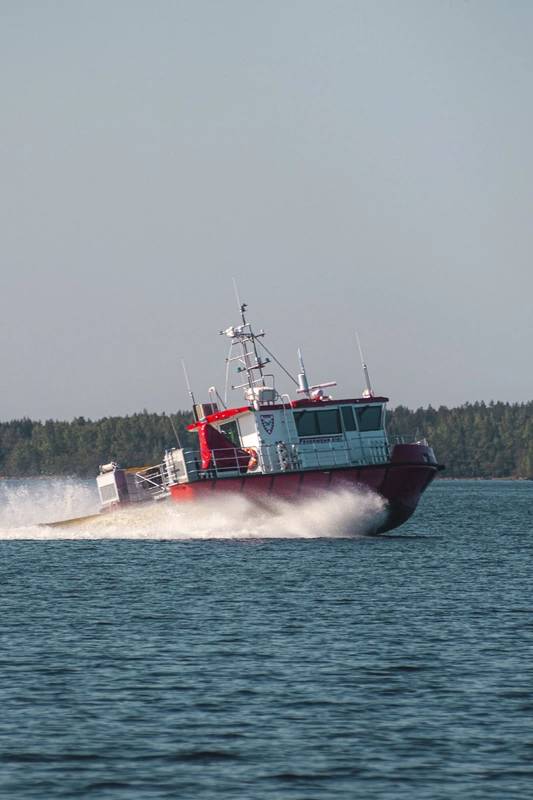 Electric equipment company Molabo of Germany supplied the power system for a recently-delivered fire-fighting and rescue boat built by the Finnish shipyard Kewatec.
Electric equipment company Molabo of Germany supplied the power system for a recently-delivered fire-fighting and rescue boat built by the Finnish shipyard Kewatec.
Image courtesy Molabo
French boat builder Alternatives Energies says the series of eight hybrid patrol vessels it built for the French Navy back in 2020 use battery power up to 80% of the time. Among the benefits are the reduction in odor and noise for the crew. Conventional power allows for a speed of 10 knots with diesel-powered generators, and the low-speed, zero-emission operating mode uses batteries that can be recharged at dockside or at sea. The vessels have a serial hybrid configuration: 2x150kW motors, 2x150kW gensets and 164kW battery pack.
MPA Guardian was intended to be a technology demonstrator for the MPA, and vessel designer BMT says vessels such as this are critical to proving that the technologies are now mature enough to provide real world benefit to operators.
Understanding the operating profile of the vessel is key to determining energy storage and propulsion requirements, says Steven Lee, Chief Naval Architect at BMT. BMT works closely with battery suppliers to determine the most appropriate battery type, chemistry and optimum operating conditions so that the battery lifespan is maximized. Charging rates, charging frequency, depth of discharge and end-of life capacity are all important considerations in achieving the optimum energy storage solution. Virtual prototyping and simulations provide further insight to match energy storage against mission profiles.

